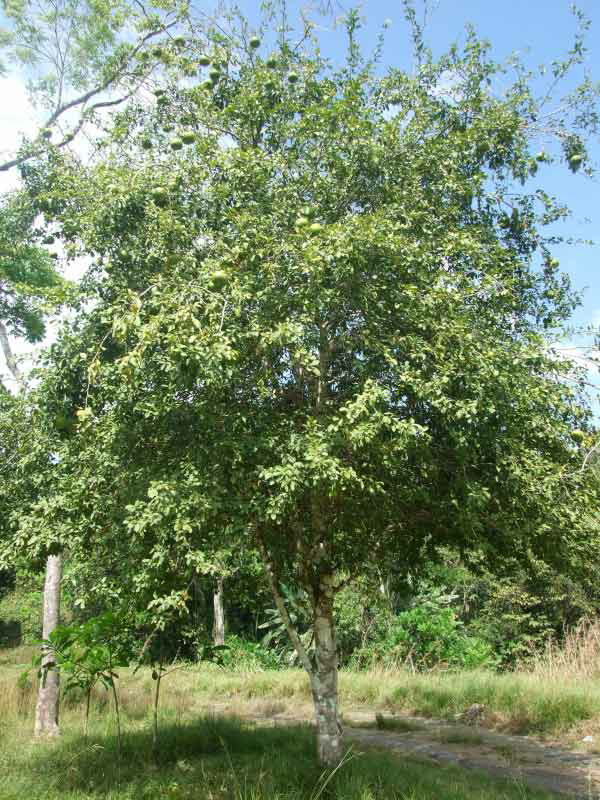Aegle marmelos
Family : Rutaceae
Common Name : Bael Tree
English Name : Stone apple
Hindi Name : Sriphal, Bel
Telugu Name : Maredu
Bengali Name : Bel
Tree Characteristics :
Bael tree is a slow-growing deciduous shrub or tree that can reach an eventual height of 10 - 15 metres. The bole, which is usually fluted at base, can be 50cm in diameter. The tree is armed with 1 - 2cm long spines. The bael tree is frequently cultivated on the plains of India for its fruit. It is considered a sacred tree in the Hindu culture, the leaves are indispensable offerings to the Lord Shiva. The tree is commonly grown in the grounds of temples in India , where the fruit is used to make a very refreshing drink for the monkies.
Nursery:
4,800 to 7,200 seeds/kg The seeds are obtained from the ripe fruits collected from trees Break open the fruits and the seeds are washed to remove the mucilage and dried for a few days in the sun Seed is viable for short period under ambient room temperatures Wash the seed to remove the mucilage and then dry for a few days in the sun; they may be coated with red lead, if necessary, to keep off ants. Germination percentage - 56 to 90; Germination period is 21 days; Fresh seeds are sown in plastic trays filled with vermiculite. Watering should be done regularly twice a day. The seedlings are pricked out into polythene bags of 20 x 10 cm size filled with potting mixture. The seedlings will be ready for planting in the next season as the growth of seedlings is slow The growth of the seedlings is very slow and hence should be kept in nursery for two years.
Economic Uses :
Fruit eaten raw or made into marmalades, jams, jellies, drinks etc.The orange fruits have an aromatic, pleasant-flavoured yellow pulp.
It contains a significant quantity of vitamin C.
Young leaves and shoots - cooked as a vegetable or used as a condiment.
They are said to reduce the appetite.
An infusion of the flowers forms a refreshing beverage.
The fruits, leaves, twigs and root of the bael tree are used medicinally.
They contain coumarins, flavonoids, alkaloids, tannins and oil.
The dried pulp is astringent. It reduces irritation in the digestive tract and is an excellent remedy in cases of diarrhoea and dysentery.
The ripe fruit is also laxative and demulcent.It eases stomach pain and supports healthy function of the stomach.
The dried root is used in the treatment of earache.














